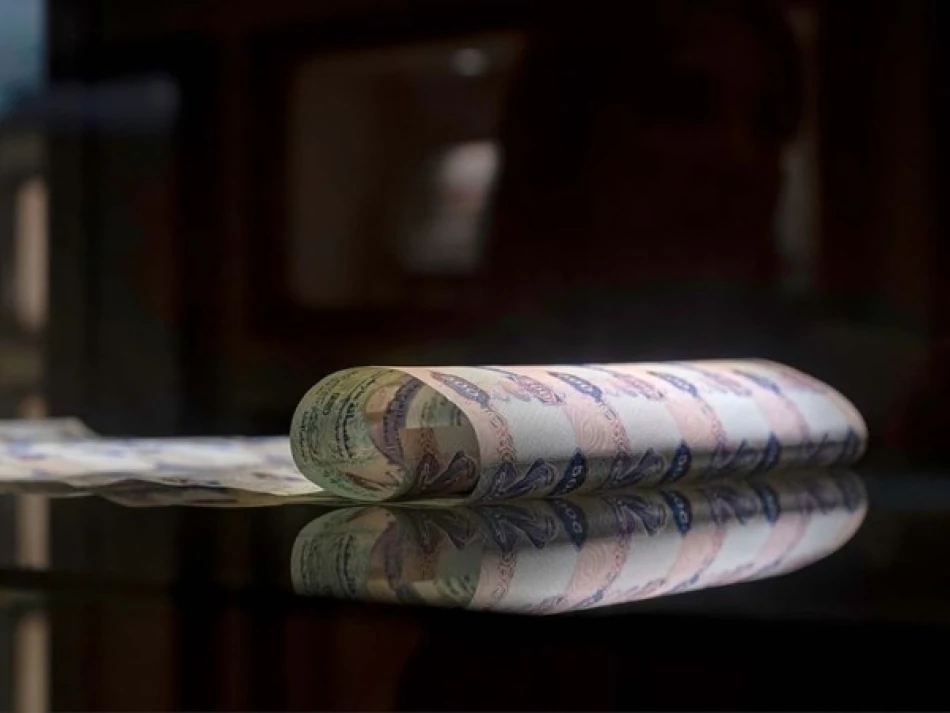
UAE Bank Investments Surge Past $210 Billion in April
UAE Banking Sector Surges as Investment Portfolio Hits AED 774 Billion
The UAE's banking sector is experiencing a remarkable investment boom, with total bank investments reaching AED 774.3 billion by April 2025—a striking 16.2% year-on-year increase that signals the country's growing role as a regional financial powerhouse and reflects strong liquidity conditions in the post-oil diversification era.
Investment Growth Outpaces Regional Peers
The Central Bank of the UAE's latest banking indicators reveal an investment surge that significantly outpaces typical banking sector growth rates across the Gulf region. The monthly growth of 1.4% from March to April suggests sustained momentum rather than a temporary spike, indicating that UAE banks are actively deploying capital in a rising interest rate environment.
This growth trajectory places the UAE banking sector ahead of regional competitors like Saudi Arabia and Qatar, where banking investment growth has been more modest. The 16.2% annual increase also surpasses the typical 8-12% growth rates seen in mature banking markets like Singapore or Hong Kong during similar economic cycles.
Debt Securities Drive Portfolio Expansion
Government and Corporate Bonds Lead the Charge
The investment breakdown reveals a strategic focus on debt securities, which reached AED 352.4 billion, representing nearly half of total bank investments. This heavy allocation toward bonds reflects banks' response to higher interest rates, allowing them to lock in attractive yields while maintaining relatively lower risk profiles compared to equity investments.
Hold-to-maturity securities accounted for another AED 345.8 billion, suggesting banks are positioning for long-term income generation rather than trading gains. This conservative approach mirrors strategies adopted by major international banks during the Federal Reserve's rate-hiking cycles between 2022-2024.
Equity Investments Remain Conservative
At AED 19.3 billion, equity investments represent less than 3% of total bank investments—a notably conservative allocation that reflects regulatory prudence and risk management priorities. This low equity exposure contrasts sharply with banking sectors in markets like India or Brazil, where banks typically hold 5-8% of portfolios in stocks.
Credit Growth Signals Economic Confidence
Total banking credit exceeded AED 2.259 trillion with 9.5% annual growth, indicating robust lending appetite despite global economic uncertainties. The domestic credit component of AED 1.881 trillion demonstrates that banks are primarily funding local economic activity, supporting the UAE's diversification initiatives in technology, renewable energy, and manufacturing.
Foreign credit of AED 378.3 billion highlights the UAE's role as a regional lending hub, particularly for infrastructure projects across the Middle East and Africa. This international exposure positions UAE banks similarly to Singapore's banking sector, which serves as a regional financial gateway.
Deposit Base Reflects Regional Capital Flows
Total deposits of AED 2.965 trillion, with AED 275.6 billion from non-residents, underscore the UAE's success in attracting international capital. The non-resident deposit share of approximately 9% indicates growing confidence in UAE banking stability and the dirham's peg to the US dollar.
This deposit growth provides banks with ample liquidity for continued investment expansion, creating a virtuous cycle of capital deployment and economic growth that has historically characterized successful financial hubs like Switzerland and Luxembourg.
Abu Dhabi's Dominance Reflects Oil Wealth Recycling
Abu Dhabi banks lead with AED 408.9 billion in investments, followed by Dubai's AED 296 billion, reflecting the capital's role in recycling oil revenues into financial assets. This geographic distribution mirrors the broader UAE economic structure, where Abu Dhabi's sovereign wealth and energy revenues provide the foundation for Dubai's commercial and financial services expansion.
The remaining emirates contributed AED 69.5 billion, indicating that banking sector growth is spreading beyond the two major financial centers—a positive sign for the UAE's goal of creating a more geographically balanced economy.
Market Implications for Investors and Policymakers
For international investors, these figures suggest the UAE banking sector offers compelling exposure to regional growth while maintaining conservative risk management. The strong deposit base and diversified investment portfolio make UAE bank stocks attractive for investors seeking Gulf region exposure without the volatility of pure oil plays.
From a policy perspective, the robust investment growth provides the Central Bank with flexibility to maintain monetary stability while supporting economic diversification. The strong capital position also positions UAE banks to potentially expand into emerging markets in Africa and South Asia, following the successful international expansion models of Singaporean and Hong Kong banks.
Most Viewed News

 Layla Al Mansoori
Layla Al Mansoori






